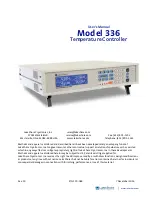
Chapter 5 Packet Operation
Note
: You might see data (packets) show up on the DSP’s tuning indicator which don’t print on the screen.
This is normal and is a function of the
MONITOR
and the
MPROTO
commands.
What It Means
There are different types of packets that will mean different things to your DSP—it keeps track of and knows what
to do with all these packets so you don’t have to worry about them most of the time. Since the DSP has the
capability of monitoring all the packet activity on a channel, it’d be wise for you to observe what scrolls up on the
screen for awhile to see how stations interact with each other.
Examine the first packet exchange in the examples above:
N7ALW*>WA7GCI
[C]
WA7GCI*>N7ALW
(
UA
)
The first callsign is the originator of the packet. The callsign after the “>” is the station the packet’s addressed to. So
the packet listed above originated from N7ALW and is being sent to WA7GCI. The “[C]” immediately following
the two callsigns identifies this packet as a connect request. So, N7ALW is trying to connect with WA7GCI.
The second packet,
WA7GCI*>N7ALW
(
UA
), is in response to N7ALW’s connect request—WA7GCI responded to
N7ALW with a “(
UA
)” which stands for Un-numbered Acknowledge; WA7GCI sent N7ALW an
ack
signal as if to
say, “Yes, I acknowledge getting your packet for a connect request.”
The next packet is data (text) sent from N7ALW to WA7GCI.
N7ALW*>WA7GCI:
Hi Bob, how are you this evening?
The stations are connected and are enjoying a QSO.
One benefit of packet radio is that packets can be relayed, or digipeated. In fact, packets can be “digied” by up to
eight other stations to get them to a distant station you can’t reach directly. In practice, digipeating through a large
number of stations doesn’t work very well, but still you will often see packets that are digipeating through one or
two stations to get to their destination. A better way to relay packets us by using the node functions of your DSP-
232. See nodes and Node Operation later in this chapter. The packet shown below is an example of a digipeated
packet:
K6RFK>N7ALW*>N7GMF:
Goodnight, John--its been nice talking to you.
This packet originated from K6RFK and is intended for N7GMF, but for one reason or another it’s being digipeated
through N7ALW. Notice the asterisk (*) in the first line—it tells you which station was actually heard by N7GMF
when it received the packet. In this case, we can see that we actually heard radio station N7ALW. Without the
asterisk, you couldn’t tell whether the transmission came from radio station K6RFK or N7ALW. More will be
discussed about digipeating later, but the above example is typical.
The next packet:
K6RFK>N7ALW*>N7GMF
[D]
. . . is again from K6RFK to N7GMF and is being digipeated through N7ALW. This packet indicates that K6RFK
has finished talking to N7GMF and wants to disconnect. Again you see that you aren’t hearing K6RFK directly but
N7ALW as indicated by the asterisk (*) after his call.
N7GMF>N7ALW*>K6RFK
(
UA
)
This packet is an
ack
that lets K6RFK know that N7GMF has
ack
ed the disconnect request. K6RFK and N7GMF
are no longer connected.
The following packet:
KD7NM*>MAIL:
September, 05
5-5
Summary of Contents for DSP-232
Page 120: ...Chapter 6 GPS Applications September 05 6 1...
Page 138: ...Chapter 7 Maildrop Operation 7 18 September 05...
Page 158: ......
Page 159: ...Chapter 8 ASCII and Baudot Operation September 05 8 1...
Page 185: ......
Page 186: ...Chapter 9 AMTOR Operation September 05 9 1...
Page 198: ......
Page 199: ...Chapter 10 Morse Operation September 05 10 1...
Page 207: ......
Page 208: ...Chapter 11 SIAM and NAVTEX Operation September 05 11 1...
Page 230: ......
Page 231: ...Chapter 12 PACTOR Operation September 05 12 1...
Page 240: ...Chapter 13 Troubleshooting September 05 13 9...
Page 254: ...Chapter 13 Troubleshooting 13 9...
Page 256: ...DSP 232 Manual Addendum September 05 AD 2...
Page 259: ...Appendix A Radio Connections Radio Connection Diagrams September 05 A 3...
Page 260: ...Appendix A Radio Connections A 4 September 05...
Page 261: ...Appendix A Radio Connections September 05 A 5...
Page 262: ...Appendix A Radio Connections A 6 September 05...
Page 263: ...Appendix A Radio Connections September 05 A 7...
Page 267: ...Appendix D Mailbox Upgrade September 05 D 2...
Page 268: ...Appendix E Schematics and Pictorial September 05 E 3...
















































